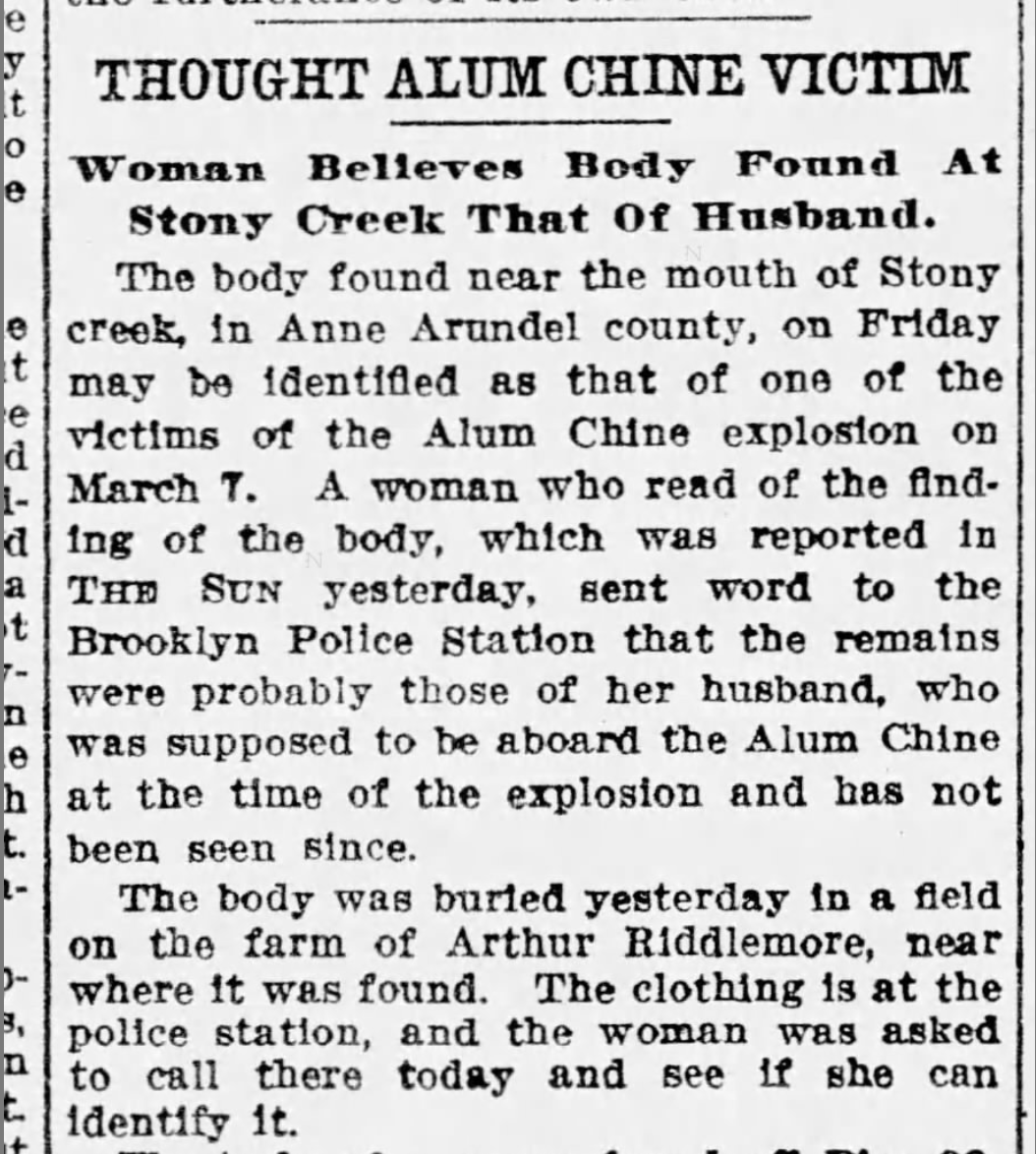On July 15, 1919, an article was published in the Baltimore Evening Sun about a headless ghost that had been seen wandering near an area known as Stony Creek. It sounds like the perfect beginning to an urban legend, an urban legend that for some reason never really stuck. Maybe because the area is now highly industrialized and is home to a superfund site and a hazardous waste landfill.
Apparently, this ghost without a head was seen wandering around Stony Beach and the surrounding woods woefully moaning and asking where his head was. Who’s got my head? Young people in the area began flocking to the beach with the hopes of catching a glimpse of the headless phantom.
The appearance of the headless ghost was said to originate from one of the worst maritime disasters at that time that took place in the area on March 7th, 1913. At approximately 10:30 a.m. that morning a British tramp steamer named the Alum Chine was mid-stream in the Patapsco River between Sparrows and Hawkins Point where 350 tons of dynamite was being loaded.

Suddenly, smoke was seen pouring out of the ship and the men aboard began yelling that she was going to explode. Within minutes the ship exploded spewing a 50-foot tower of flame into the air followed by a large mushroom cloud that could be seen from miles around. The blast was so intense that windows in the surrounding towns were blown out, debris fell down as far as 2 miles from the scene, and a 6-foot tide poured into Hawkins Point.
The explosion not only instantly obliterated the Alum Chine, but also a loading scow that she was tied to along with a nearby tug named the Atlantic. Men weren’t just killed from the blast, many were killed or seriously injured from shrapnel, rivets, and chunks of iron and wood, and body parts that rained down upon them. By that evening it was determined that at least 20 men were killed and their bodies brought to morgues in Baltimore. The number of dead would eventually rise to 33, but there were most likely more.


Many of the victims were unable to be identified given the sheer trauma that was inflicted on the bodies. At least 12 of the unidentified dead were buried at the Davis Chemical Plant in Baltimore. In 1952 the remains were reinterred in the Old Marley Methodist Protestant Church Cemetery in Glen Burnie, Maryland.
Almost two months after the explosion, the body of a headless, unidentifiable man washed ashore near the mouth of Stony Creek, and this is when the legend of the headless ghost began. The body was buried in a field on the farm of a man named Arthur Riddlemore, near where it had been found. Within weeks of this body being found, stories began circulating about a wailing headless ghost in the area.

It’s unknown if the woman ever determined the headless body belonged to her husband. Who knows, maybe there’s a ghost out there today, wandering around a toxic dump still looking for his head.
Sources
https://www.baltimoresun.com/news/bs-xpm-1997-03-02-1997061122-story.html
https://aagensoc.org/cemeteryRecords.php?cid=77
http://www.gendisasters.com/maryland/2444/baltimore-md-harbor-explosion-mar-1913?page=0,3

